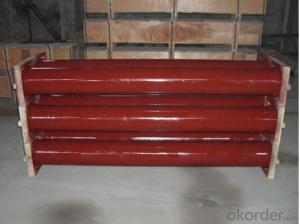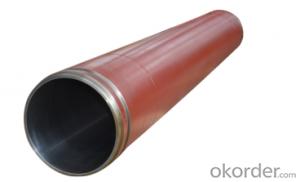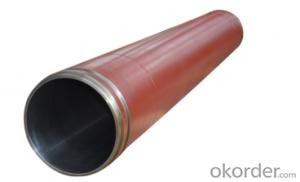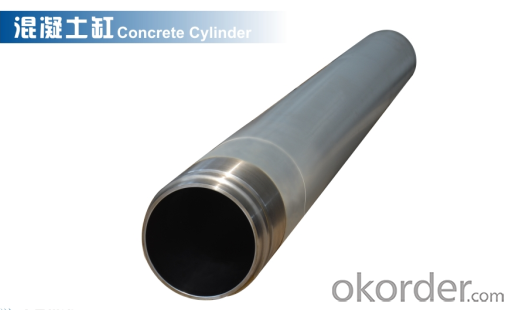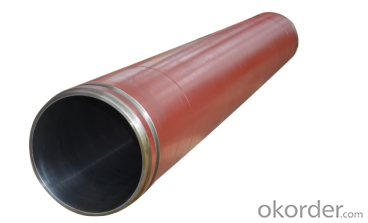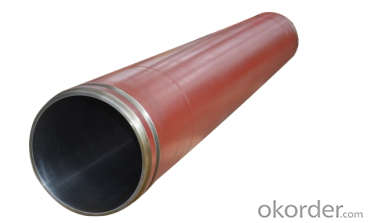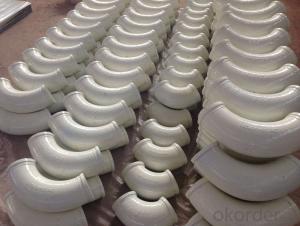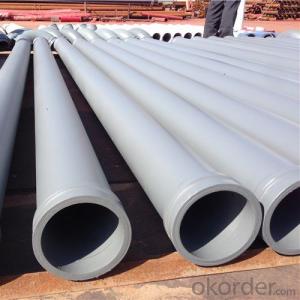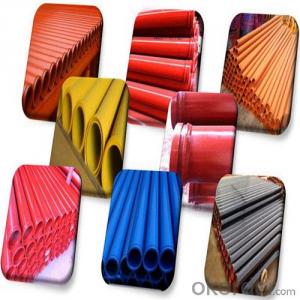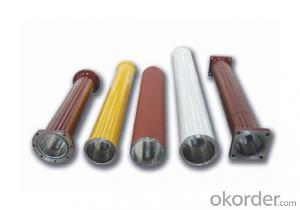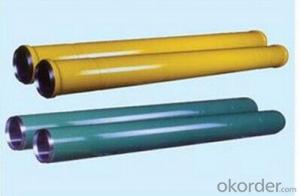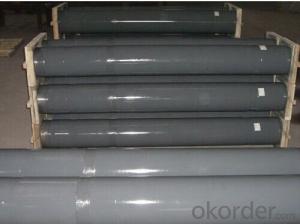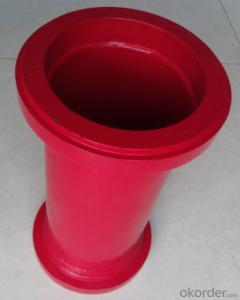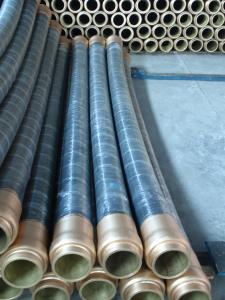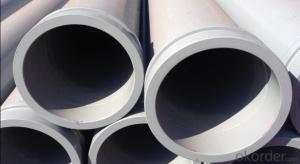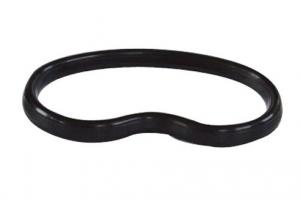PUMPING CYLINDER(SCHWING) I.D.:DN230 CR. THICKNESS :0.25MM-0.3MM LENGTH:2215MM
- Loading Port:
- Shanghai
- Payment Terms:
- TT OR LC
- Min Order Qty:
- 2 pc
- Supply Capability:
- 1000 pc/month
OKorder Service Pledge
OKorder Financial Service
You Might Also Like
Product Description:
The Concrete Pump Delivery Cylinder DN230*2215 normally made by steel material No. C45. according to customer’s requests, and also package in bundles or nude packing directly put into container.
Scope of Application of the Cylinders
The Pump Delivery Cylinder DN230*2215 is a Cylinder pumping for combined use with other concrete pumps parts in concrete pumping operations. It can be widely used in the construction of various types of concrete structures like industrial and civil buildings, bridges, roads, and other types of infrastructure.
This Cylinder Cylinder DN230*2215can only be used in concrete pump construction operations, but not in any other operations, like dragging, moving, or hoisting heavy articles or personnel. The pipe is also not allowed to be used in any location where any combustible or explosive material exists or a cave-in may occur.
Specifications:
Concrete Pump Delivery Cylinder DN180*2000
1. Capacity: 60,000~80,000cbm
2. Size: DN180, DN200, DN230.DN250
3. Material: C45
4. quenching and tempering to improve the hardness to HB241-280
5. inner wall chrome thickness is 0.25-0.30mm, hardness HV820-900.
6. Brand: SCHWING, PM, SANY, KYOKUTO, CIFA
7. Capacity: 60,000~80,000cbm
Product Advantages:
OKorder's Cylinders DN230*2215Channels are durable, strong, and safety.
Main Product Features:
· Premium quality
· Prompt delivery & seaworthy packing (10-20 days)
Reliable performance
Easy to weld
High safety.
· Professional Service
· Competitive pricing
Measuring of wall thickness from the outside
Low purchase cost
FAQ:
Q1: How long about delivery time about DN230*2215?
A1: Normally we keep the raw materials for old customers and sometime we also keep stock products to make sure delivery time in any emergency cases.
Q2: How do we guarantee the quality of our Cylinders DN180*2000?
A2: We have established an advanced quality management system which conducts strict quality tests at every step, from raw materials to the final product. At the same time, we provide extensive follow-up service assurances as required.
Q3: How soon can we receive the product after purchase?
A3: Within three days of placing an order, we will book the vessel for goods. The specific shipping date is dependent upon international and government factors, but is typically10 to 30 workdays.
Q4: If we can produce some Cylinders DN230*2215according to customers request?
A4: Yes, we can produce Cylinders DN230*2215according to the difference country situations to make it suitable to the market and customers. We have very professional technical team to make the design.
Q5: How to make a quick resolution for after service?
A5: OKorder and our manufacture both have overseas branches all-around of world.
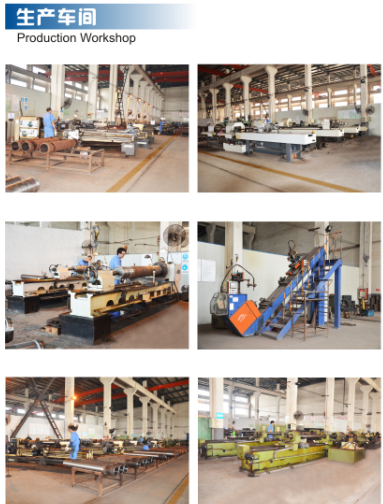
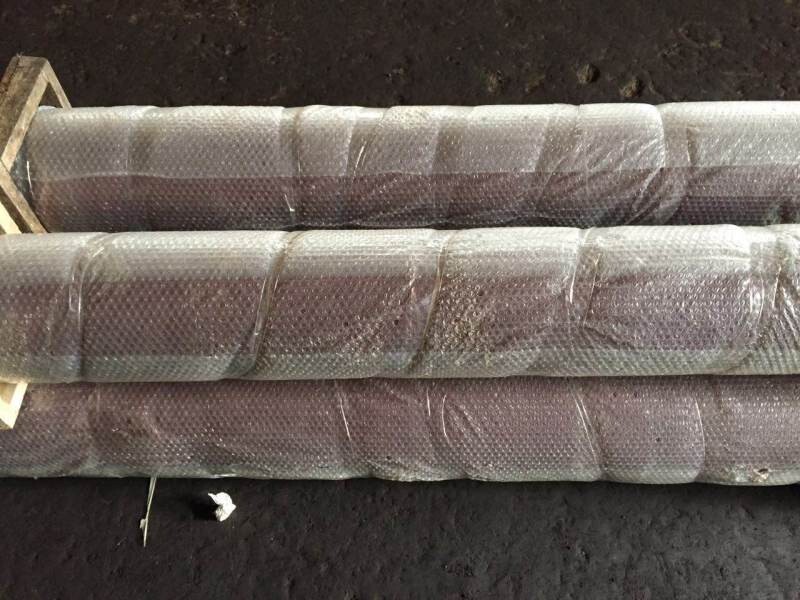
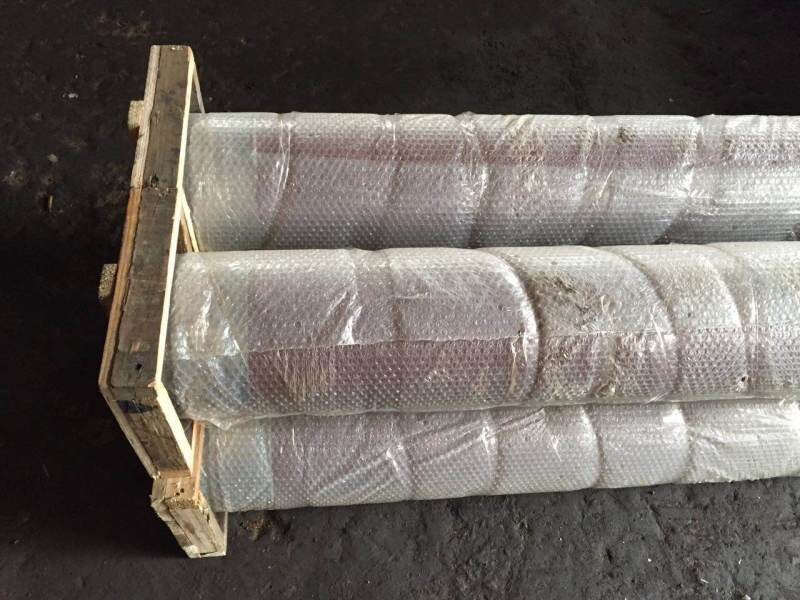

- Q: What are the layout requirements of concrete pump for building engineering?
- When more than one concrete pump or pump truck is pouring at the same time, the selected location should be the closest to each other. It is better to pour the concrete at the same time, so as to avoid retaining the construction joint.
- Q: Can I get spare parts for both concrete pumps with and without agitators?
- Yes, you can get spare parts for both types of concrete pumps - those with agitators and those without. Many manufacturers and suppliers of concrete pumps offer a wide range of spare parts to ensure the smooth operation and maintenance of these machines. These spare parts include but are not limited to wear plates, cutting rings, delivery cylinders, pistons, seals, hoses, valves, and filters. It is recommended to contact the manufacturer or authorized dealers of the specific concrete pump brand you are using to inquire about the availability and pricing of spare parts for both types of pumps.
- Q: What are the different sizes of concrete pump pipes available?
- The sizes of concrete pump pipes typically range from 2 inches to 6 inches in diameter.
- Q: How can a malfunctioning hydraulic motor affect the pumping process?
- A malfunctioning hydraulic motor can have various negative effects on the pumping process. Firstly, it can result in a decrease in pumping efficiency. The hydraulic motor is responsible for converting the hydraulic energy into mechanical energy, which drives the pumping mechanism. If the motor is malfunctioning, it may not be able to generate enough power to operate the pumping system effectively, leading to a decrease in the volume or pressure of the pumped fluid. Additionally, a malfunctioning hydraulic motor can cause an increase in energy consumption. Inefficient or faulty motor operation can lead to higher energy requirements to maintain the desired pumping rate. This increased energy consumption can result in higher operating costs and reduced overall system performance. Furthermore, a malfunctioning hydraulic motor can lead to irregular pumping or complete pump failure. If the motor is not functioning properly, it may result in intermittent or inconsistent pumping, causing fluctuations in the flow rate or pressure of the pumped fluid. In extreme cases, the motor may completely stop working, leading to a total loss of pumping functionality. Moreover, a malfunctioning hydraulic motor can cause increased wear and tear on the entire pumping system. The motor's improper operation can create excessive vibration or heat, leading to premature failure of other components such as seals, bearings, or pistons. This can result in frequent maintenance or repair requirements, leading to increased downtime and costs. In summary, a malfunctioning hydraulic motor can have significant negative impacts on the pumping process, including decreased efficiency, increased energy consumption, irregular pumping or complete pump failure, and increased wear and tear on the system. It is crucial to regularly inspect and maintain hydraulic motors to ensure their proper functioning and avoid potential issues that may disrupt the pumping process.
- Q: How often should concrete pump booms be inspected and maintained?
- Concrete pump booms should be inspected and maintained regularly, ideally on a monthly basis or as recommended by the manufacturer. This regular inspection and maintenance schedule helps ensure the safe and efficient operation of the equipment and minimize potential risks or breakdowns.
- Q: How can one store and handle concrete pump spare parts to maintain their quality?
- To maintain the quality of concrete pump spare parts, it is crucial to store and handle them properly. Firstly, these spare parts should be stored in a clean and dry environment, away from moisture and direct sunlight. They should also be protected from dust and debris by using suitable covers or packaging. Additionally, it is important to handle them with care, avoiding any rough or improper handling that could cause damage. Regular inspection and maintenance of the spare parts should also be conducted to identify any signs of wear or corrosion, ensuring they are in optimal condition when needed for use.
- Q: What are the different types of concrete pump hopper agitator motors?
- There are generally two types of concrete pump hopper agitator motors: electric motors and hydraulic motors. Electric motors are powered by electricity and are commonly used in smaller and portable concrete pumps. Hydraulic motors, on the other hand, are driven by hydraulic power generated by the concrete pump itself and are typically used in larger and stationary concrete pumps.
- Q: Do concrete pump spare parts come with a warranty?
- Yes, concrete pump spare parts typically come with a warranty. The specific duration and coverage of the warranty may vary depending on the manufacturer and supplier. It is advisable to check the product specifications or consult with the supplier to understand the warranty terms for concrete pump spare parts.
- Q: In general, how much concrete will be transported per hour for the concrete pump and the pump?
- Day pump, usually with concrete tank car, a jar of 9 cubic meters, unloading 7-10 minutes to completeDay pump, usually with concrete tank car, a jar of 9 cubic meters, unloading 7-10 minutes to complete
- Q: How can a faulty oil cooler affect the pump's hydraulic system?
- A faulty oil cooler can affect the pump's hydraulic system in several ways. Firstly, the oil cooler is responsible for maintaining the optimal temperature of the hydraulic oil. If the oil cooler is faulty and fails to cool the oil effectively, the hydraulic oil may overheat. This can lead to a decrease in the oil's viscosity, causing it to lose its lubricating properties. As a result, the pump's moving parts may experience increased friction and wear, leading to reduced efficiency and potentially causing damage to the pump itself. Secondly, a faulty oil cooler may result in inadequate cooling of the hydraulic oil, leading to elevated temperatures within the system. High temperatures can cause the oil to oxidize, resulting in the formation of sludge and varnish deposits. These deposits can clog the hydraulic system, including the pump, valves, and other components, impeding their smooth operation and potentially causing them to malfunction. Additionally, a faulty oil cooler may also lead to a decrease in oil flow rate. If the oil cooler is not functioning properly, it may restrict the flow of hydraulic oil, reducing the amount of oil available for the pump's operation. This can result in decreased hydraulic pressure, affecting the pump's performance and potentially leading to issues such as reduced power output or inadequate operation of hydraulic actuators. Overall, a faulty oil cooler can negatively impact the pump's hydraulic system by causing overheating, increased friction and wear, the formation of deposits, and reduced oil flow rate. It is crucial to regularly inspect and maintain the oil cooler to ensure its proper functioning and prevent any potential damage to the hydraulic system.
Send your message to us
PUMPING CYLINDER(SCHWING) I.D.:DN230 CR. THICKNESS :0.25MM-0.3MM LENGTH:2215MM
- Loading Port:
- Shanghai
- Payment Terms:
- TT OR LC
- Min Order Qty:
- 2 pc
- Supply Capability:
- 1000 pc/month
OKorder Service Pledge
OKorder Financial Service
Similar products
Hot products
Hot Searches
Related keywords
